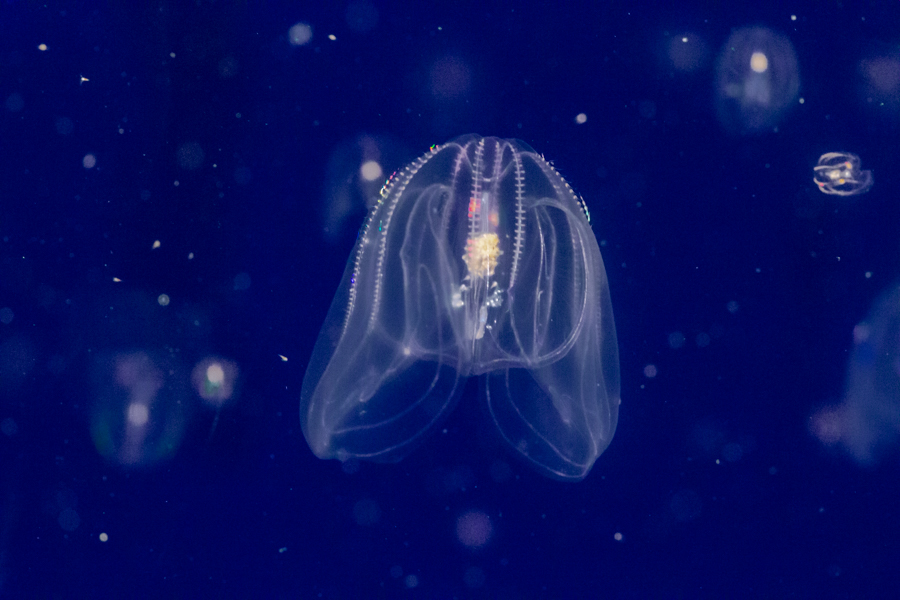Jelly Husbandry
The Aquarium's aquarists have successfully cultured several species of jellies for many years. In protected environments such as aquariums, jellies can live longer than their lifespans in the wild because of the absence of predators and the availability of an adequate food supply.

Credit: Andrew Reitsma / Aquarium of the Pacific
What are they fed?
The Aquarium’s jellies are fed brine shrimp twice a day. Some of the larger species’ diets are supplemented with additional types of food, like krill and tiny crustaceans called copepods. The sea nettles, lion’s mane jellies, and egg yolk jellies are also fed young moon jellies, which is a normal part of their diet in the wild.
Do they sting?
All the jellies (except for the comb jellies) can sting to some extent. At the Aquarium, the sea nettles are the most likely to produce a sting that is painful to humans. When handling this species, the best line of defense against stings is latex gloves because the stinging cells on the tentacles cannot penetrate the latex. If an aquarist handling the jellies happens to get stung despite precautions, pouring vinegar on the sting will neutralize it and stop the pain. The aquarists also rinse all tools used to clean jelly exhibits with a freshwater hose to knock off any stray tentacles that might be stuck to the tool.
Kreisel tanks
Sea jellies are planktonic—in the ocean, they drift with the currents and have little control over their locomotion. For this reason, at the Aquarium jellies are kept in special tanks called kreisels (German for “spinning top”), which are designed to keep them in suspension in a constantly moving flow of water. These tanks have rounded corners to prevent jellies from getting stuck, and water circulates around the perimeter to prevent jellies from settling at the bottom.

